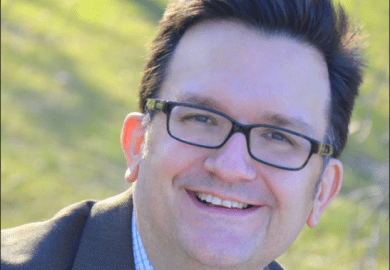After 50 years of distinguished work in acoustics, Robert Beyer, an emeritus professor of physics at Brown University, has spent four years of his retirement writing this superb history of the development of the subject during the past two centuries. He dedicates his book "to all acousticians, both those who are mentioned in this book and those who are not. Together they have constructed the vast edifice of sound and vibration."
Beyer's book deserves to be read by all those professionally involved in acoustics. But the book will appeal to a much wider readership. It is beautifully illustrated with the original diagrams and photos produced by researchers who have made the most significant contributions, and written in a style that makes for informative and entertaining reading. It is also clear that considerable effort has been put into ensuring factual accuracy - over 1,400 references are cited.
Those outside the field should also realise that to write such a history is no light undertaking. The subject of acoustics is indeed a "vast edifice", which incorporates the study of electro-acoustics and ultrasonics; shock, vibration and noise, musical and architectural acoustics, communications, speech and hearing (and the associated branches of psychology and physiology), seismology, atmospheric sound, underwater acoustics and acoustical oceanography. All these disciplines are unified by the basic physical acoustics that underpins the study of vibrations and waves in mechanical continua.
At the start of the 19th century, where Beyer's history begins, surprisingly little was known about any of these fields. The great 18th-century workers such as Euler, Lagrange and D'Alembert had developed some of the mathematical apparatus necessary to describe acoustic wave motion. Indeed, Newton had previously discussed the propagation of sound in his 17th-century Principia , and erroneously calculated the speed of sound in air from, as Beyer puts it, "intricate geometric considerations". Beyer describes the start of the 19th century as a time of tremendous change, with "the beginnings of modern chemistry, steam power, mass production and a growing knowledge of optics and electricity". He rightly points out that since "acoustics lives by its interaction with other sciences and engineering", this period represents a natural starting point for the modern development of the subject.
Work in acoustics during the 19th century was dominated by a small number of scientists who made gigantic contributions. At the start of this period, Thomas Young, the "English physician and polymath", and the German Ernest Chladni wrote extensively on acoustics, in the latter case, with an "almost complete absence of mathematics". However, it was probably Hermann von Helmholtz, John Tyndall and John William Strutt (Lord Rayleigh) who made the most significant advances. The work of these three is described extensively in Beyer's book and one is left to marvel at the physical understanding that they achieved with primitive, but ingenious experimental apparatus. Tuning forks for the production of sound and sensitive flames for its detection were the order of the day, and yet today's acousticians, on believing that they may have discovered something new, are wise to consult first Rayleigh's Theory of Sound before rushing to publish their result. However, Beyer does not neglect other 19th-century workers. For example, he tells the story of Sophie Germain, who in 1815 first deduced the fourth-order differential equation governing the vibration of plates. Germain was a French mathematician who corresponded with the great scientists of her day but, being a woman, had no public career. Beyer also describes the work of some of the great electrical engineers. Joseph Henry's work on electromagnetic induction is discussed together with the acoustical consequences of the operation of the telegraph.
Detailed accounts are given of the life and work of Alexander Graham Bell, the invention of the telephone, and Thomas Edison's work on the phonograph. The excitement of this great age of invention is well conveyed.
The first quarter of the 20th century is often thought of as a dull period for the subject, and yet there were a surprising number of developments. The moving-coil loudspeaker, the condenser microphone and the vacuum-tube amplifier all emerged around this time, together with Edward Sabine's quantification of the importance of reverberation in architectural acoustics. The sinking of the Titanic in 1912 stimulated some of the first work in underwater acoustics. By this time, it was no longer feasible for researchers in acoustics to emulate Rayleigh and work on all aspects of the subject. It is similarly difficult to summarise developments in 20th-century acoustics across such a broad field, but Beyer achieves this most effectively.
The final chapter describes some of the developments in modern acoustics from 1975-95, the author sensibly deciding to sample a number of topics rather than attempting a complete coverage. He selects areas of research that continue to make acoustics an exciting field. These include underwater sound propagation on a global scale (for studies of climate change), the vibrations of complex ("fuzzy") structures, and the active control of sound and vibration. He also summarises recent work on acoustic refrigeration, the luminescence of acoustically excited gas bubbles, and the study of the mechanics of the cochlea in the human ear. The closing section describes some fascinating research on speech perception by infants undertaken by Patricia Kuhl, the president of the Acoustical Society of America.
To quote Beyer himself: "It's been a long time since the days of Sophie Germain!".
Philip Nelson is professor of acoustics, University of Southampton.
Sounds of Our Times: Two Hundred Years of Acoustics
Author - Robert T. Beyer
ISBN - 0 387 98435 6
Publisher - Springer
Price - £34.00
Pages - 444
Register to continue
Why register?
- Registration is free and only takes a moment
- Once registered, you can read 3 articles a month
- Sign up for our newsletter
Subscribe
Or subscribe for unlimited access to:
- Unlimited access to news, views, insights & reviews
- Digital editions
- Digital access to THE’s university and college rankings analysis
Already registered or a current subscriber? Login



